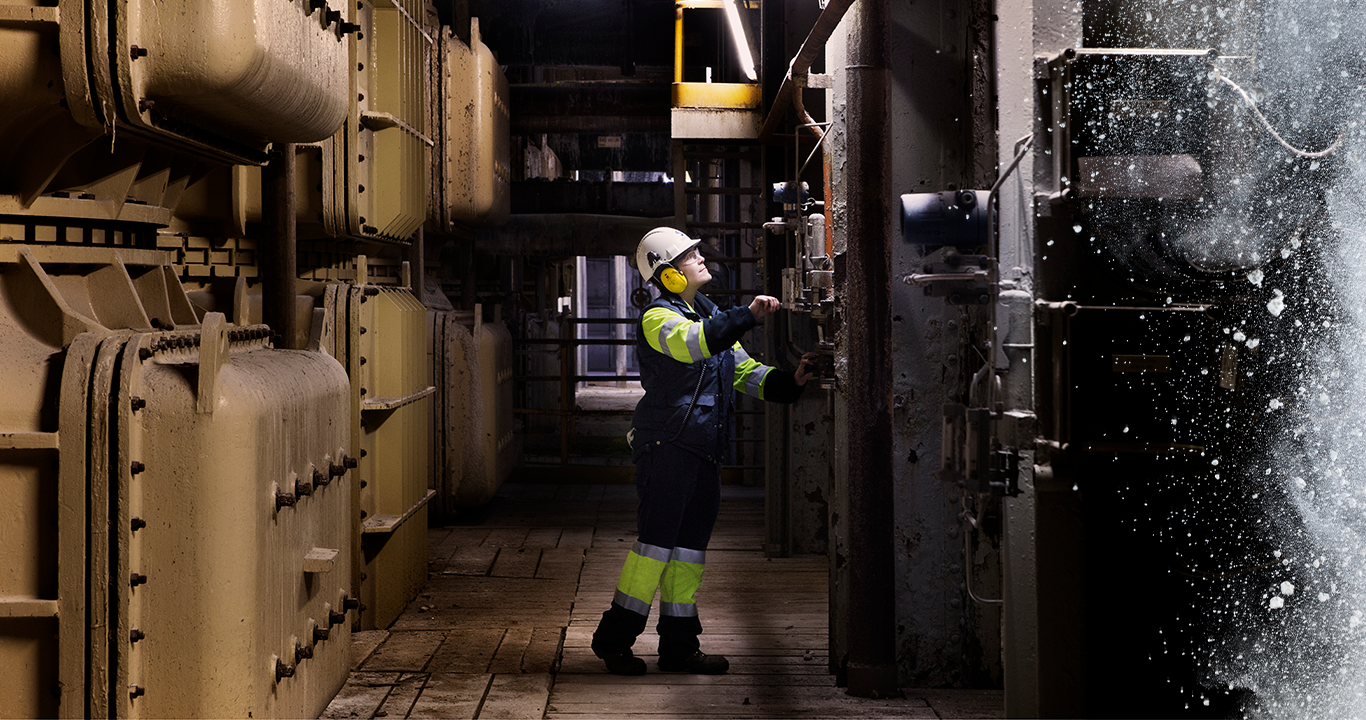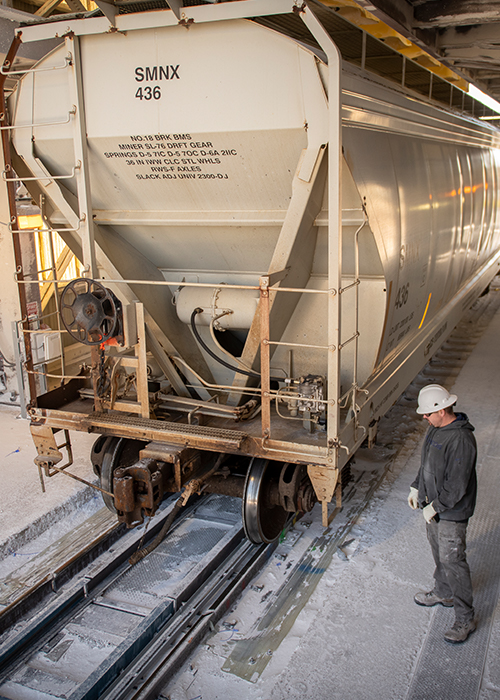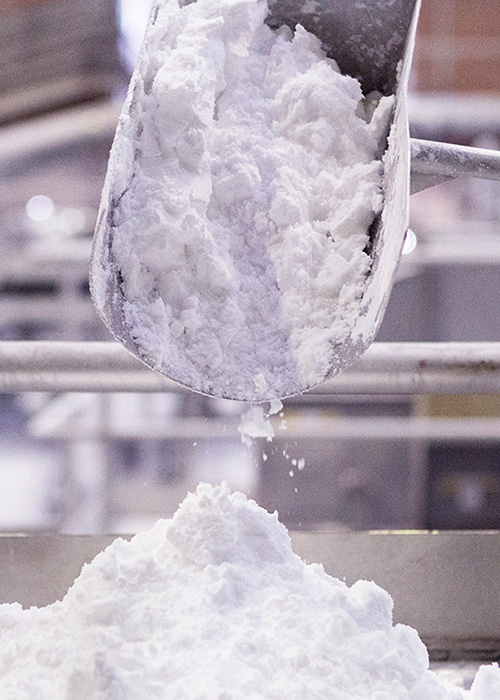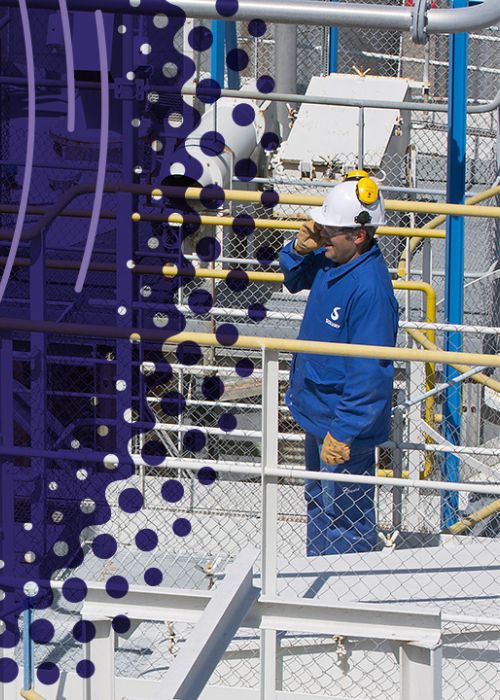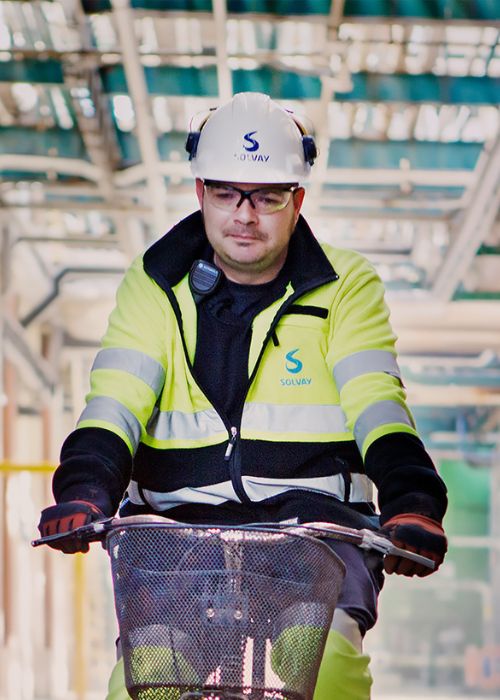Collaboration between industry and governments is key
Soda ash is a key ingredient in our everyday lives. It’s in the windows of our houses, the detergents we use to clean, the rechargeable batteries that power our appliances, among many other applications. So, it’s fair to say a life without it is almost unimaginable.
Though used in many sustainable solutions such as lithium-ion batteries, traditional manufacturing processes remain carbon-intensive. As Solvay plans to reach carbon neutrality by 2050, it’s essential we lead our legacy business into a sustainable future. But we can’t do this alone. Strong partnerships with governments, local communities and customers have been and will continue to be necessary drivers to achieve an affordable and competitive transition towards sustainable soda ash.
At Solvay, we’ve already started laying the groundwork with an ambitious two-level program.
Step One: Everything starts with energy transition
The first phase is energy transition. As part of our carbon neutrality plans, Solvay has set the goal to reduce greenhouse gas (GHG) emissions by 30% by 2030. To achieve this, we’re replacing coal with cleaner energy resources across our soda ash sites.
One way we’re doing this is with biomass. At our Rheinberg site, for example, coal-fired boilers are being replaced with alternatives that use waste wood chips to produce steam and electricity. This will not only cut the site’s CO2 emissions by 65% but also set a new sustainability reference: GHG levels at Rheinberg will be even lower than at plants that produce soda ash derived from trona. Meanwhile in Devyna, a variety of renewable sources including sunflower husk pellets will be used to power production processes at our largest European site and reduce emissions related to energy production by 20%.
We’ve introduced a similar circular economy approach at Dombasle by only using waste produced in France, and primarily sourced from the Grand Est and neighbouring regions. Using local, non-recyclable waste as green energy means that each year 400,000 tons of waste doesn’t end up in landfills and 200,000 tons of imported coal is cut.
The Solvay site in Dombasle is a successful example of decarbonization. Congratulations! You provide proof by example that we can reconcile industry and climate. The State will be there to help you continue on this path.
Significant investments have also been made at other locations. Already equipped with a waste to energy power plant since 2006, we recently invested a further €48 million to modernise our gas cogeneration unit in Bernburg and maintain our low CO2 footprint at the site. We also followed suit in Italy by building an energy-efficient gas turbine at our Rosignano site. By implementing a cogeneration system that combines heat and power generation processes, we were able to keep up standard production capacity with less energy required, lowering the site’s CO2 emissions by 40%.
And across the pond in Green River, Wyoming, our calciners and boilers are switching from coal to gas, a readily-available local resource, which saves 280 kilotons of CO2 per year. This is in addition to the new project Solvay launched to deploy a new breakthrough technology that will abate greenhouse gas emissions originating from Trona mining operations. This will reduce the site’s greenhouse gas emissions by 20% while we grow its capacity. It will also make Solvay the first company to implement regenerative thermal oxidation technology to cut emissions from a trona mine.
Step Two: Revolutionizing the soda ash industry
Of course, to go fully net zero, phasing out coal is not enough. The next crucial step is process innovation, which means changing the way we manufacture soda ash. Here, Solvay recently made a ground-breaking announcement: our Solvay researchers have patented a more sustainable method to produce soda ash, reinventing the original Solvay process.
At our Dombasle site, we are piloting this new production process. It introduces three revolutionary improvements to our current Solvay process: 50% less CO2 emissions; 20% less energy and natural resources consumption, including water, salt and limestone; and the complete elimination of limestone residues. Once validated, we will implement this new Solvay process at all our sites and propel our sustainability ambitions into a new era that will significantly change the soda ash landscape.
For industry to advance, governments must walk hand in hand
As a world leader in soda ash, we want to champion an industry that accommodates both scientific progress and climate. And as a world leader, we also know that collaboration and partnerships are crucial to deliver disruptive solutions and shared value.
Our RDF ambitions in Dombasle are being realized in collaboration with Veolia and thanks to the support of the French government, the Grand Est region, ADEME and committed investors. And Rheinberg is on track to become the world’s first soda ash plant powered primarily by renewable energy thanks to the support of local authorities, and local companies supplying the required waste wood.
We know it won’t be easy to guide Solvay’s 160-year old legacy business into a carbon-neutral world.
It will take great effort, commitment and investment, but with the right support and collaboration, we can make it worthwhile.
